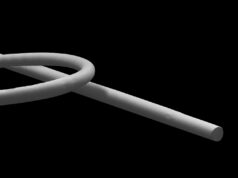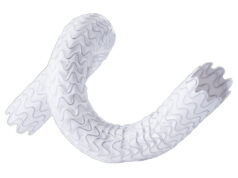 “More than in any other medical discipline,” says Vascular Access Society of Britain and Ireland (VASBI) president Robert Jones, “interventional radiology (IR) is where medicine meets technology”. A consultant interventional radiologist at Queen Elizabeth Hospital Birmingham, he is now looking to expand the society’s reach to patients, and help it stoke more interest in arteriovenous (AV) access from interventional radiologists. Speaking to Renal Interventions on IR its future, he describes its unique challenges, his mentors and the music that makes it onto his playlist.
“More than in any other medical discipline,” says Vascular Access Society of Britain and Ireland (VASBI) president Robert Jones, “interventional radiology (IR) is where medicine meets technology”. A consultant interventional radiologist at Queen Elizabeth Hospital Birmingham, he is now looking to expand the society’s reach to patients, and help it stoke more interest in arteriovenous (AV) access from interventional radiologists. Speaking to Renal Interventions on IR its future, he describes its unique challenges, his mentors and the music that makes it onto his playlist.
What drew you to a career in medicine and in IR?
As a teenager, I spent some time in hospital as a patient and became fascinated with what was going on around me—I guess my interest in medicine developed from there. What drew me to IR was the idea of not only being able to confidently diagnose a condition, but also having the ability to treat it with state-of-the-art technology. IR really is where technology and medicine interact more than in any other medical discipline.
Who are your mentors and who has inspired you in your career?
I am exceptionally grateful to everyone who has ever taught me and invested time in my training. Whilst doing the IR fellowship in Vancouver in 2007/8, I was really inspired by Chris Morris, who was a senior interventional radiologist at the time. He had decades of experience and had seen IR evolve from a fledgling discipline in the 1970s to what it is today and it was fascinating hearing about his career. Even in the twilight of his career he would be there on call at two in the morning, enthusiastic to teach and impart his knowledge—his perseverance was really inspirational. Also, Gerald Legiehn taught me it is okay to be pedantic and to always maintain high standards, while the late Peter Riley, who trained me in Birmingham, taught me to weigh up the risks of everything before you do it. He was measured, but not afraid of a challenge—he also taught me some off-piste skiing and had a wicked sense of humour. When I was a registrar, I was doing a nephrostomy with him and I was making a hash of it. He elbowed me and said, “I tell you what, why don’t you let me finish up here? There’s a shopping list over there, in the control room. Just wander up to Marks and Spencer and get me a few bits and pieces”. He was old-school.
Which recent developments most interest you?
Endovascular arteriovenous fistula (endoAVF) is up there on that list. I have been involved in it for six years and it is still relatively early days, and we have got so much more to learn and understand, which will only come with more research, and everyday clinical use and exposure. There are many other developments in IR outside vascular access. There is an ever-expanding development of embolic materials, which allows us to carry out safer and more effective embolisation procedures (particularly in arteriovenous malformations [AVMs], which I also have an interest in). Watching this technology evolve is very interesting.
What is the most important thing you think can be done to improve IR provision for patients with kidney disease?
In the UK, vascular access is not necessarily the most popular domain of IR services. While many centres provide excellent IR support for dialysis patients, there are others where this is not necessarily present to the required level. There is concern within the vascular access community, judging from the results of national surveys, that some areas in the country are not getting the service they require. To improve on this, we need to enthuse colleagues and trainees around the country and demonstrate this field is not just about that heart-sink moment when you get a call at five o’clock on a Friday to de-clot a fistula or a graft, or just treat a simple fistula stenosis. Rather, it is an exciting area that poses many challenges that require prompt action and intervention to get the patient to their next dialysis session. Vascular access is also an area that allows you to build a rapport with patients through their regular visits to IR and become aware of their specific dialysis access circuit issues and requirements.
How does your work with VASBI affect your view of the field of vascular access?
It makes me realise that caring for dialysis patients is probably more multidisciplinary than other areas, with IR playing a vital role in not only maintaining and salvaging vascular access but, nowadays, creating it too. The fact that I interact frequently with colleagues in other specialties such as nephrology and surgery, provides a more holistic view of vascular access and makes me realise how important it is to read around the subject from all angles and keep up to date.
What are your goals as VASBI president?
What has been lacking from VASBI for many years is patient involvement, both in the society and the meetings. As we speak, we are developing a patient area on our website. This is a vital aspect to any society, and we are aiming for it to go live later this year. While it is still early in development, the concept is to provide patients with an easy-to-access and easy-to-use information database that includes all aspects of dialysis. This will be of huge benefit to both new and established dialysis patients. The website overall needs some maintenance and polish, and this is being looked at at present. Beyond this we want to attract more colleagues from around the country—and internationally too—to participate in the meetings and aim to offer more to membership such as focused one-day courses.
Are there any new technologies that you think will be especially effective in kidney care?
Artificial intelligence is coming into kidney care. Wearable devices to monitor dialysis access are a reality and the idea of artificial kidneys is fascinating—it is where science fiction meets medicine. With the tech boom progressing the way it has over the past 10–20 years, we may see some of these concepts pan out into reality sooner than we think. What we have to bear in mind is that a lot of kidney patients spend many hours, three or four days a week hooked up to a dialysis machine, so if technology can optimise or limit this in some fashion, it would be really effective for improving kidney care across the board.

What upcoming trial results in the space would you like to get a look at?
Beyond any specific trials, the drug-coated balloon space needs more work and understanding. While we know there is good evidence to support the use of certain drug-coated balloons in treating vascular access stenosis, there are other reports that are conflicting. There is a lot of evidence but it is very heterogeneous. To date, the main focus has been on paclitaxel, but at the Charing Cross Symposium last year there were results on sirolimus-coated balloon trials presented. It would be interesting and exciting to compare plain, paclitaxel and sirolimus balloons for the treatment of vascular access stenosis in a single trial.
How do you think the introduction of endovascular fistulas has impacted and will continue to impact dialysis care?
There is no doubt this is an exciting development with many benefits, but there are still so many unanswered questions, especially regarding real-world results outside of research studies. There is a lot of debate around patient selection, which is a vital consideration for improving results. Understanding which patients will benefit from endoAVF is key. We also have to think about how to deal with a dysfunctional endoAVF, as they do require maintenance procedures, and the technical approach is very different to a standard surgical AVF (sAVF). Patient choice is a big consideration when patients become more aware of these more cosmetically acceptable fistulas created via a minimally invasive procedure. In the UK there is no lack of enthusiasm for endoAVF, but evidence on reinterventions is scarce and the device cost is prohibitive. Without a national tariff and National Institute for Health and Care Excellence (NICE) guidance, it is difficult to convince hospital administration of their value in the UK–, and more robust health economics would help.
What are the fundamental questions you ask, and what is your philosophy as a physician, when you approach each patient?
If I am teaching a registrar, I encourage them to first of all gather as much information on a patient’s history as they can, even before they meet them—and not just imaging history, but also clinical notes and letters. Get a feel for the patient’s condition before you meet them. Focus on their current issues, but keep the whole patient in the background. Communication is massive, irrespective of your specialty. Put the patient at ease and show them you are human too while still maintaining a gap—get the balance. I have conversations with patients during procedures, and it is easy to find something to talk about. Seeing as most of our patients are awake or under light sedation in IR, maintaining that line of communication during a procedure is particularly important to reduce their stress levels. Constantly balance the risk and benefit of each action you take during a procedure.
What advice would you give to young physicians and students looking to focus on vascular access?
Whatever you do, do it to the best of your ability irrespective of your specialty. Stay up to date with the evidence. Be interested in your work and enjoy it, and this will reflect in the treatment of your patients. This is universal across medicine.
What are your interests outside of medicine?
I cycle (road and mountain bike) and hike all year round, and ski in the winter. I visit my native Wales as much as possible. When I can find the time, I tinker with my classic Ford.
What music is on your IR suite playlist ?
Anything from the 60s through the 90s of any genre is typical, particularly rock based. Even more esoteric and recent rock or blues-type stuff is there—if it is not met with too much objection from the staff.
Fact file
Current appointments:
- Consultant interventional radiologist, Queen Elizabeth Hospital Birmingham (QEHB), UK
Education:
- 1997: MBChB, Leicester Medical School, UK
- 2002: MRCP (Member of Royal College of Physicians)
- 2005: FRCR (Fellow of Royal College of Radiologists)
- 2002–07: West Midlands Radiology training programme, UK
- 2007–08: Vascular IR Fellowship, VGH/UBC, Vancouver, Canada
Honours (selected):
- 2011–14: Lead for IR at QEHB
- 2014–17: Clinical Service Lead for Radiology, QEHB
- 2016: DeVA trial principal investigator (PI)
- 2016: EverlinQ EU trial, site co-investigator, QEHB
- 2017–22: VASBI Treasurer
- 2022: WAVE Wrapsody trial PI
- 2022–24: VASBI President










